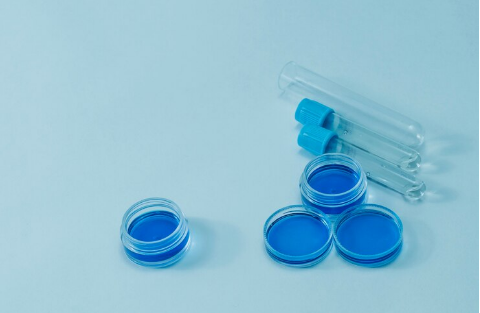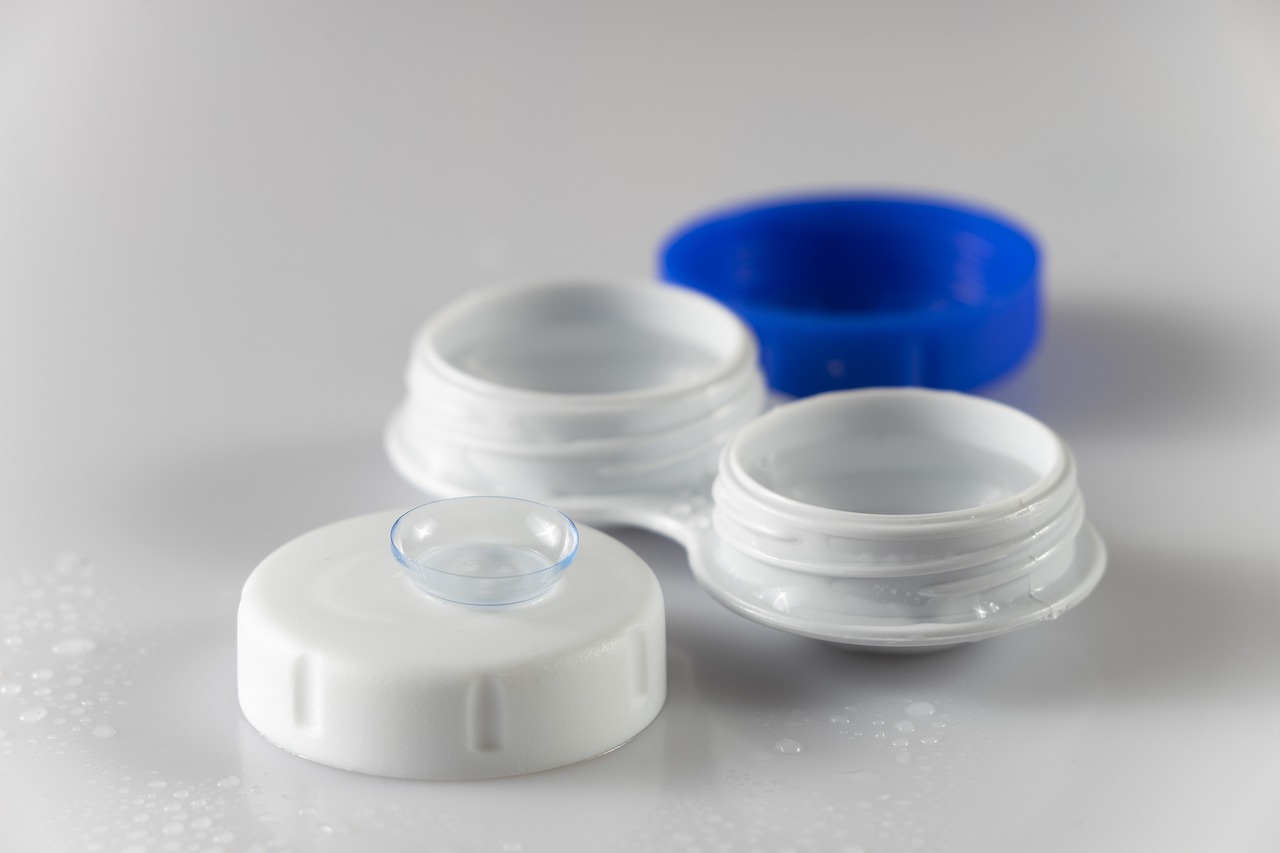Contact Lens Discomfort: Why Are My Contact Lenses Uncomfortable?

Do your eyes feel itchy, burn, or tear up when you wear contact lenses? You're not alone.
Many people experience discomfort with contact lenses, but most issues can be easily addressed, so there's no need to switch to glasses just yet. In the United States, about 45 million people wear contact lenses, which is roughly 1 in 6 people, discomfort leads some to opt for glasses instead.
Table of Contents
However, if you prefer contacts, don't give up. This post discusses the common causes of contact lens discomfort and how it can be treated, offering solutions to help you continue wearing your lenses comfortably.
What causes contact lens discomfort?
Damaged Contact Lens
- Tears, chips, or cracks in contact lenses are common issues. Always inspect lenses before insertion to ensure they are free from damage.
- Disinfecting lenses can sometimes cause them to warp. If a lens appears warped, discard it and use a new one to avoid discomfort or eye injury.
- Damaged lenses can scratch the cornea, leading to irritation or infection. Warped lenses may not fit properly, impacting vision correction.
- Proper lens care, including avoiding exposure to makeup, creams, or hairspray, is crucial to prevent contamination from bacteria and other harmful substances.
Dry Eyes
- Reduced blinking while wearing contacts, especially when using screens, can cause dry eyes. Blinking more frequently and using lubricating eye drops can help.
- Consult with your optometrist before using new eye drops, as not all are compatible with contact lenses.
- Persistent dry eyes may require switching to contact lenses designed specifically for dry eyes or making lifestyle changes to minimize exposure to dust, smoke, and air conditioning. Also read How to Rehydrate And Clean Contacts without a solution?
Eye Discomfort at Night
- Wearing contacts for extended hours can cause discomfort by the end of the day. Consider removing lenses earlier in the evening or switching to lenses with higher oxygen permeability for better hydration and comfort.
Burning After Lens Insertion
- Burning sensations upon lens insertion may indicate dirty lenses. Contact lenses can absorb various substances, leading to discomfort.
- Always wash your hands with unscented soap before handling lenses and avoid exposure to irritants like hairspray or smoke before inserting them.
- Using daily disposable lenses can help reduce the risk of contamination and keep your eyes comfortable
Contact Lens Awareness
- If a lens feels like it’s moving around in your eye, it might not fit properly. A loose lens or one with an incorrect diameter or base curve can cause discomfort.
- Tight lenses may feel comfortable initially but can lead to long-term problems. If discomfort persists despite a proper fit, replacing the lenses may be necessary due to dirt and residue buildup. Also read to know What Should to do If Eyes turn Red Wearing Contact lenses?
Allergic Reactions
- Redness, itching, and soreness upon lens insertion could be signs of an allergic reaction to your contact lens solution. Speak with your optometrist about switching to a different brand.
- Always consult with your doctor before changing lens care products, as not all lenses are compatible with every solution.
Seasonal Allergies
- Contact lenses can exacerbate eye allergy symptoms during allergy seasons. Dirt and particles may stick to lenses, intensifying discomfort.
- Switching to daily disposable lenses can help control symptoms by preventing allergen buildup. Your optometrist may also recommend artificial tears to flush out allergens throughout the day.
Symptoms of contact lens discomfort
If you experience any of the following symptoms while wearing contact lenses, it's important to stop using them immediately and consult your eye doctor:
- Burning, Itching, or Stinging Sensations: If your eyes feel irritated or uncomfortable, it could indicate that something is wrong with the lenses, the solution, or your eyes themselves.
- Foreign Body Sensation: A feeling that something is stuck in your eye might suggest that the lens is damaged, dirty, or improperly positioned.
- Excessive Watering or Tearing: This can be a sign that your eyes are reacting to an irritant, such as a damaged lens, allergens, or even an infection.
- Unusual Eye Discharge: Any unusual secretions from the eyes, such as mucus or pus, could indicate an infection that requires prompt medical attention.
- Redness of the Eyes: Red, bloodshot eyes can signal irritation or an underlying condition, especially if it persists after removing the lenses.
- Reduced Sharpness of Vision: If your vision becomes less clear or sharp while wearing contacts, it may be a sign that the lenses are not fitting properly, or that there is a problem with your eyes.
- Blurred Vision, Rainbows, or Halos Around Objects: These symptoms can be related to several eye conditions, including corneal swelling or damage, and should be checked by an eye care professional.
- Sensitivity to Light: If your eyes suddenly become more sensitive to light, it could be a sign of inflammation or another serious issue.
If any of these symptoms occur, it's needed to discontinue contact lens use and seek professional medical advice to prevent potential damage to your eyes. Your eye doctor can determine the cause and provide the appropriate treatment or adjustments needed.
How to Get Relief?
To effectively address contact lens discomfort, consider these strategies. Start by consulting your eye doctor to determine the best approach for your specific situation:
- Artificial Tears or Eye Drops
Over-the-counter artificial tears can provide temporary relief for dry eyes. However, it’s crucial to consult your eye doctor before using any eye drops, as some can damage your lenses. Additionally, avoid drops that reduce redness; these only shrink blood vessels without addressing the underlying cause.
- Switching to New Contact Lenses
If your current lenses cause irritation or dryness, discuss newer lens designs with your doctor. Each year brings advancements in contact lens technology, offering better comfort and moisture retention. Your doctor may also suggest changing your lens-wearing schedule.
- Scleral Lenses
For those who experience discomfort and dry eyes throughout the day, scleral lenses may be a viable option. These rigid gas permeable (RGP) lenses rest on the sclera (the white part of the eye) and provide a reservoir of moisture, offering continuous hydration and improved comfort.
- Proper Lens Care
Maintaining proper lens hygiene is essential to prevent discomfort, inflammation, and infections. Follow these guidelines:
- Wash and dry your hands thoroughly before handling lenses.
- Remove lenses before swimming, showering, or bathing.
- Avoid sleeping in lenses unless they are approved for overnight wear.
- Replace lenses according to the manufacturer’s instructions, and don’t reuse daily disposables.
- Regularly clean and replace your lens case.
- Use only lens solutions recommended by your eye doctor, and never reuse or mix solutions.
- Get a Better Fit
A poorly fitting lens can cause discomfort, irritation, or even damage to your eyes. Ensure that your lenses fit properly by having a comprehensive fitting with your eye doctor. A proper fit will help prevent issues like lens movement or excessive tightness, which can lead to discomfort.
- Nutrition for Eye Health
Maintaining a balanced diet rich in omega-3 fatty acids can support overall eye health and reduce dryness. Foods like fish, flaxseeds, and walnuts are excellent sources of omega-3s, which help keep your eyes lubricated and reduce irritation associated with dry eyes.
- Regular Eye Exams
Scheduling regular eye exams is crucial to ensure your contact lenses remain suitable for your eyes. Regular check-ups help catch potential issues early and allow your eye doctor to make necessary adjustments to your prescription or lens type.
By following these steps, you can find relief from contact lens discomfort and maintain healthy, comfortable vision.



